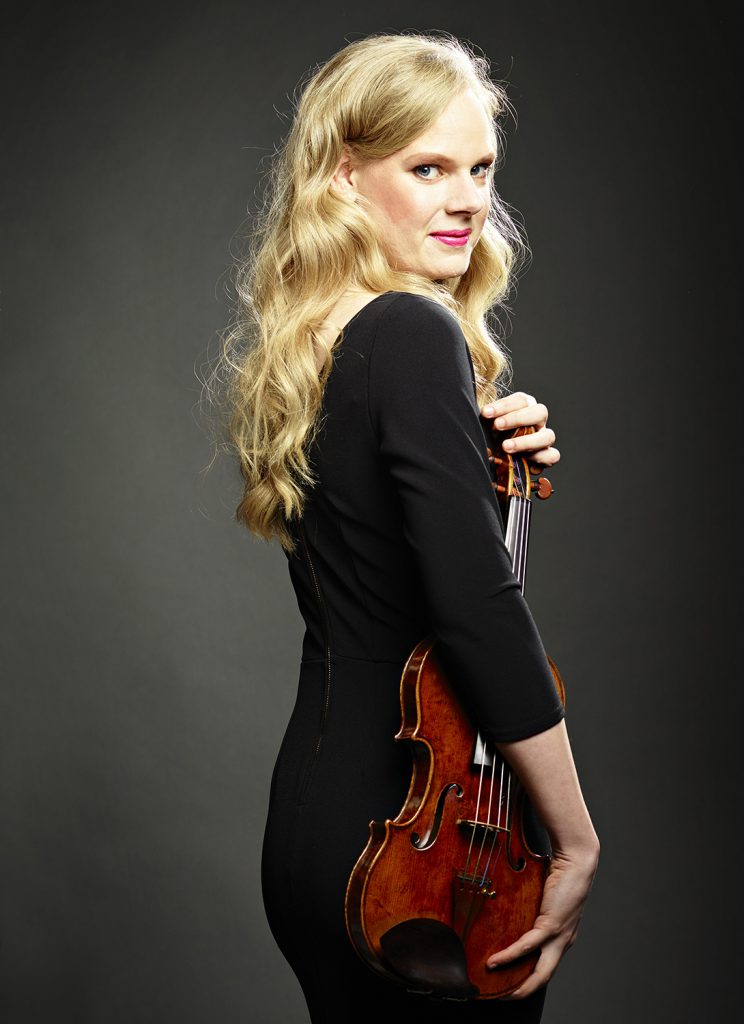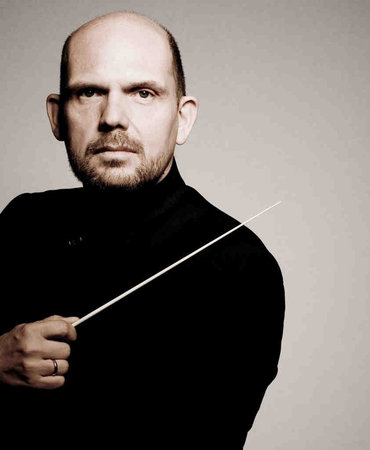Van Zweden opens DSO season with thought-provoking Brahms and Stravinsky

Simone Lamsma performed Brahms’ Violin Concerto with the Dallas Symphony Orchestra Friday night. Photo: Merlijn Doomernik
Dallas Symphony music director Jaap van Zweden, two years away from moving on to his new gig as music director of the New York Philharmonic, opened the main classical subscription series of the Dallas Symphony Orchestra this weekend with an impressive, thought-provoking pairing of masterpieces of Brahms and Stravinsky at Meyerson Symphony Center.
Friday night’s concert began with Brahms’ Violin Concerto in D, with Dutch-born, British-trained violinist Simone Lamsma as soloist. Although the work is rife with virtuosic demands, Brahms clearly had something other than a performer showpiece in mind; as in his First Piano Concerto, he eschews the attention-grabbing introduction for the soloist common to nineteenth-century concertos, instead introducing the work with a purely orchestral opening section in a dark B minor, hearkening back to Mozart in terms of structure and setting a tone of seriousness and a clear goal of profundity.
Van Zweden indulged in an almost bombastic approach here, setting a level of intensity in the opening section that was sometimes at odds with violinist Lamsma’s bright, sweet tone—and occasionally burying her.
Balance and tone were perfect, however, in the gently mournful Adagio; the serenely sorrowful chorale for winds that opens the movement here produced a sublime backdrop for Lamsma’s plaintive solo, setting up the energetic folk dance of the finale.
Here, Lamsma’s bright tone and the fullness Van Zweden had demanded matched nicely for a particularly energetic, pungent quality, rounding out and emphasizing the extraordinary breadth of ideas distilled in this concerto.

Jaap van Zweden
Brahms’ Hungarian folk-flavored finale subtly pointed the way to the much darker folklore after intermission in Stravinsky’s The Rite of Spring. Van Zweden had chosen to use a full entourage of strings for the concerto; after intermission, the stage was even more packed for the thick effects of the extravagantly scored Stravinsky.
As every music-lover knows, the premiere of the ballet version of The Rite of Spring in 1913 in Paris erupted in an audience riot. Though there was no audience violence this time around, van Zweden and the orchestra kept the audience totally engaged in this relentless series of off-kilter rhythms, blood-curdling melodies, and dense dissonance. The use of sophisticated musical technique to portray the savagery of pre-civilized human culture was part of what Stravinsky had in mind, and van Zweden and his orchestra communicated the concept magnificently.
As a ballet, Rite of Spring falls into quick, rapid-fire segments. In the concert hall, a conductor must carefully attain a sense of musical unity and impetus across the short sections to organically deliver the full shock of the final, horrific moment—and accomplish all of this while guiding the orchestra through a morass of difficult rhythms and effects. Van Zweden accomplished this admirably, and the musicians in the orchestra delivered every moment concisely and powerfully.
Placing these two heavy-duty masterpieces together on the same program seems almost random on first glance. Though their lives overlapped by fifteen years, Stravinsky and Brahms inhabited different universes in terms of philosophy and attitude.
It’s hard, however, to fathom why the program note referred to Brahms as “fusty,” and repeated a patently insupportable and condescending speculation that Brahms would not have understood or appreciated The Rite of Spring. Brahms and Stravinsky both lived in a world in which a highly advanced culture constantly teetered on the edge of extreme violence—a world not so different from our own. Placed next to each other on this very substantial evening of music-making, these two works ultimately underline the ability of two great composers to express, in troubled times, basic, universal human emotion through two very different but equally complex musical languages.
The program will be repeated 2:30 p.m. Sunday. mydso.com; 214-692-0203.
Wayne Lee Gay has covered classical music in the north Texas region for several decades. Along with awards from the Dallas Press Club and the Texas Associated Press Managing Editors Association, he was a finalist for the Pulitzer Prize for Criticism in 1990. He currently teaches in the English department at the University of Texas at Arlington and focuses on writing fiction. His poetry, fiction, and creative nonfiction has appeared in numerous literary journals and anthologies.


